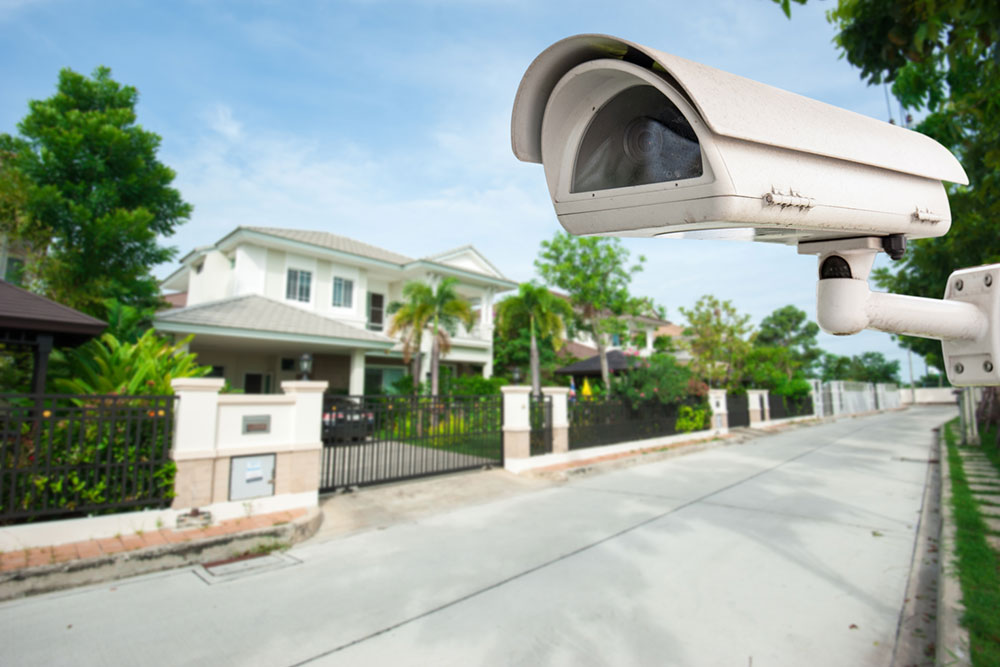Black Friday 2023 – 10 Home Security Gadgets to Expect on Sale

Home security systems have seen significant price drops every Black Friday. Year after year, homeowners have benefited from discounts and promotions on various security products. Whether buyers are looking for surveillance cameras, smart locks, or alarm systems, investing in advanced protection systems is an excellent opportunity. Here’s a list of some home security gear that did well last year and is expected to have deals during Black Friday 2023.
1. Security cameras and surveillance
There is a difference between security cameras and surveillance cameras. Security cameras are meant to be a deterrent to prevent break-ins, robberies, and other potential criminal activities. Meanwhile, the purpose of surveillance cameras is to monitor spaces within and outside. These cameras are usually hidden, while security cameras can be easily seen. Therefore, one must know what kind of protection they need for their homes. Both surveillance and security cameras have their prices slashed during the sale period. Knowing the type of cameras needed helps find deals quickly before they go out of stock.
2. Smart doorbells
A smart doorbell camera lets a homeowner see and hear who is on the other side of the door, even when the homeowner is not home. These smart devices are usually Internet-enabled and connected to a smartphone app. A single device includes a camera, doorbell, microphone, and doorbell function. Most doorbells cost $150 or less, but high-end models with advanced motion sensing and facial recognition have price tags above $200 . Last year, shoppers bought smart doorbell cameras at significant price cuts of almost $100 from big retailers like Amazon.
3. Smart door locks
With a smart lock, one can ditch their keys to conveniently and safely manage the locking system of their home, even when they are away. These locks are remotely controlled through iOS and Android apps installed on mobile devices. These apps help monitor comings and goings and send activity alerts. Smart locks are usually integrated with smart speakers and smart home hubs. The price is quite high; however, the Black Friday sale makes these quite affordable. Last year, several brands included smart locks in bundle offers or freebies when customers bought a complete home security system set.
4. Home security systems
A home security system comprises different components that work together to provide safety and protection for a home. Most of these systems include security cameras, motion sensors, entry sensors, glass break sensors, sirens, panic buttons, and smoke and carbon monoxide detectors. With so many components, the overall price is quite high. During the non-sale period, the price of an average home security system can be between $280 and $1,150. But during the Black Friday sale period, security systems are up for grabs for discounts as high as 50% off.
5. Smoke detectors
These devices sense the presence of smoke, which is usually an indicator of fire. They vary in size and shape. Smoke detectors are usually optional when it comes to home security. However, they are quite useful as preventive measures if one installs them in their homes. Usually, these detectors are included in a comprehensive home security system package. So, they are often part of bundles during the sale period. But based on last year’s sales, shoppers bought individual smoke detectors for at least 15% off the original price.
6. Carbon monoxide detectors
Carbon monoxide (CO) alarms or detectors warn against the unusual buildup of CO in a home. High levels of CO usually build up in space when fuel-burning appliances are not properly used, maintained, or installed. It can also happen due to idling cars in the garage, back-drafting appliances, or fireplaces. Like smoke detectors, these alarms are often included in home security system packages. Individual sets of CO alarms usually cost between $80 and $100. On Black Friday last year, shoppers could buy these at a discount of $30 to $50.
7. Security lighting
These days, most security cameras come equipped with floodlights and spotlights. However, homeowners can install additional lighting around their property for extra security. Many big retailers, such as Amazon, The Home Depot, Walmart, and Target, offer great money-saver deals on all types of security lighting, including floodlights and spotlights from top-selling brands. Most of these can be integrated into smart home hubs for comprehensive security.
8. Motion sensors
Motion sensors, or motion detectors, are electronic devices that detect and measure movements nearby. These are primarily used in security systems. Motion sensors are used primarily in home and business security systems. Most smart doorbells and security cameras now come with built-in motion sensors. Also, many brands include these in their complete home security packages during the sale period. Based on previous year’s sales, shoppers can look forward to lower price points on individual motion sensors and detectors this Black Friday.
9. Glass break detectors
These detectors set off alarms whenever a pane of glass has been broken or shattered. Glass break detectors or alarms are installed near glass doors or windows as a part of electronic burglar alarm systems. These are usually optional components of home security systems. Their usual price points range between $35 and $70. Several top brands and retailers offered massive discounts on these detectors on Black Friday last year.
10. Door and window sensors
These are generally called entry sensors or contact sensors. The sensors send alerts whenever someone opens a door or window to a house. Door and window sensors are usually included in smart security kits. Individual sensors often cost between $20 and $50. As seen during Black Friday last year, the prices were slashed, or the sensors came in bundle offers on purchasing comprehensive security packages.







